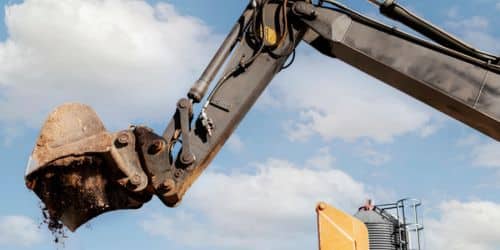Dredging, which involves excavating and removing sediments and debris from the seabed or other water bodies, is important in numerous industries and environmental preservation initiatives. Specialized dredging equipment for sale is employed to carry out this task effectively. You can easily find a dredger or dredge in sales. This article explores the different types of dredging equipment, their uses, and their numerous benefits to various applications.
Types of Dredging Equipment
1. Cutter Suction Dredgers
Cutter suction dredgers are versatile and widely used for maintenance dredging in ports, harbors, and rivers. They feature a rotating cutter head that cuts and loosens sediment pumped ashore through a suction pipe. Cutter suction dredgers are efficient and can handle various types of material, including sand, silt, and mud.
2. Bucket Dredgers
Bucket dredgers, also known as clamshell dredgers, use a mechanical bucket or clamshell to scoop up sediment from the waterbed. These dredgers are often employed for precision excavation in confined spaces, such as navigation channels, where accuracy is crucial.
3. Dragline Dredgers
Dragline dredgers utilize a large bucket suspended from a crane or dragline to scoop up sediments. They are commonly used for land reclamation and creating barriers. Dragline dredgers are particularly useful for large-scale projects requiring massive material removal.
4. Backhoe Dredgers
Backhoe dredgers are similar to land-based excavators but are adapted for dredging operations. They have a hydraulic arm with a bucket attachment that can reach underwater to excavate sediment. Backhoe dredgers are versatile and can work in various water depths.
5. Trailing Suction Hopper Dredgers (TSHDs)
Trailing suction hopper dredgers are self-propelled vessels equipped with a suction system and hopper to collect and transport dredged material. They are commonly used for deep-sea dredging, port maintenance, and beach replenishment. TSHDs can transport dredged material to designated disposal sites, making them efficient for excavation and transportation.
Uses of Dredging Equipment
One of the primary uses of dredging equipment from a manufacturer is maintaining navigation channels and harbors. Accumulated sediments can hinder vessel traffic and pose safety risks. Dredgers remove these sediments, ensuring safe and efficient maritime transportation.
2. Land Reclamation
Dredging is significant in land reclamation projects, where coastal areas or wetlands are expanded for urban development or environmental restoration. The removed sediments are deposited to create new landmasses or restore natural habitats.
3. Environmental Remediation
Dredging equipment parts are employed in environmental remediation efforts to remove pollutants, contaminants, and hazardous materials from water bodies. This helps restore water quality and protect aquatic ecosystems.
4. Beach Nourishment
Dredging equipment replenishes sand along shorelines to combat coastal erosion and maintain sandy beaches. This not only enhances recreational areas but also provides protection against storm surges and rising sea levels.
5. Mining
In the mining industry, specialized dredgers, such as bucket dredgers, extract minerals, ores, and precious metals from underwater deposits. These dredgers allow for efficient mining operations in aquatic environments.
Benefits of Dredging Equipment
Dredging equipment ensures that navigation channels, harbors, and ports remain accessible to vessels of various sizes. This, in turn, supports international trade and commerce by enabling the smooth flow of goods.
2. Flood Control
Dredging is often employed to manage water levels and mitigate the risk of flooding. Removing excess sediments from rivers and waterways helps increase their capacity to handle heavy rainfall and reduce flood-related damage.
3. Habitat Restoration
Dredging can be instrumental in habitat restoration projects. By removing contaminants and sediments, aquatic ecosystems can recover, providing a healthier environment for marine life and aquatic plants.
4. Urban Development
Land reclamation using dredging equipment expands urban areas and creates new infrastructure, enhancing economic development and urban planning.
5. Environmental Cleanup
Dredging is an effective method for cleaning up polluted or contaminated water bodies. It helps remove harmful substances and pollutants, leading to improved water quality.
6. Sustainable Resource Extraction
In the mining industry, the use of dredging equipment allows for the extraction of valuable resources from underwater deposits. This can be achieved with a relatively low environmental impact compared to conventional mining techniques.
Conclusion
Dredging equipment is a vital tool in various industries and environmental conservation efforts. With the availability of dredge in sales, it can do everything from navigation channel maintenance to land reclamation and environmental cleanup. As technology advances, the future of dredging equipment holds the promise of even more efficient and environmentally friendly solutions for the challenges of tomorrow.






